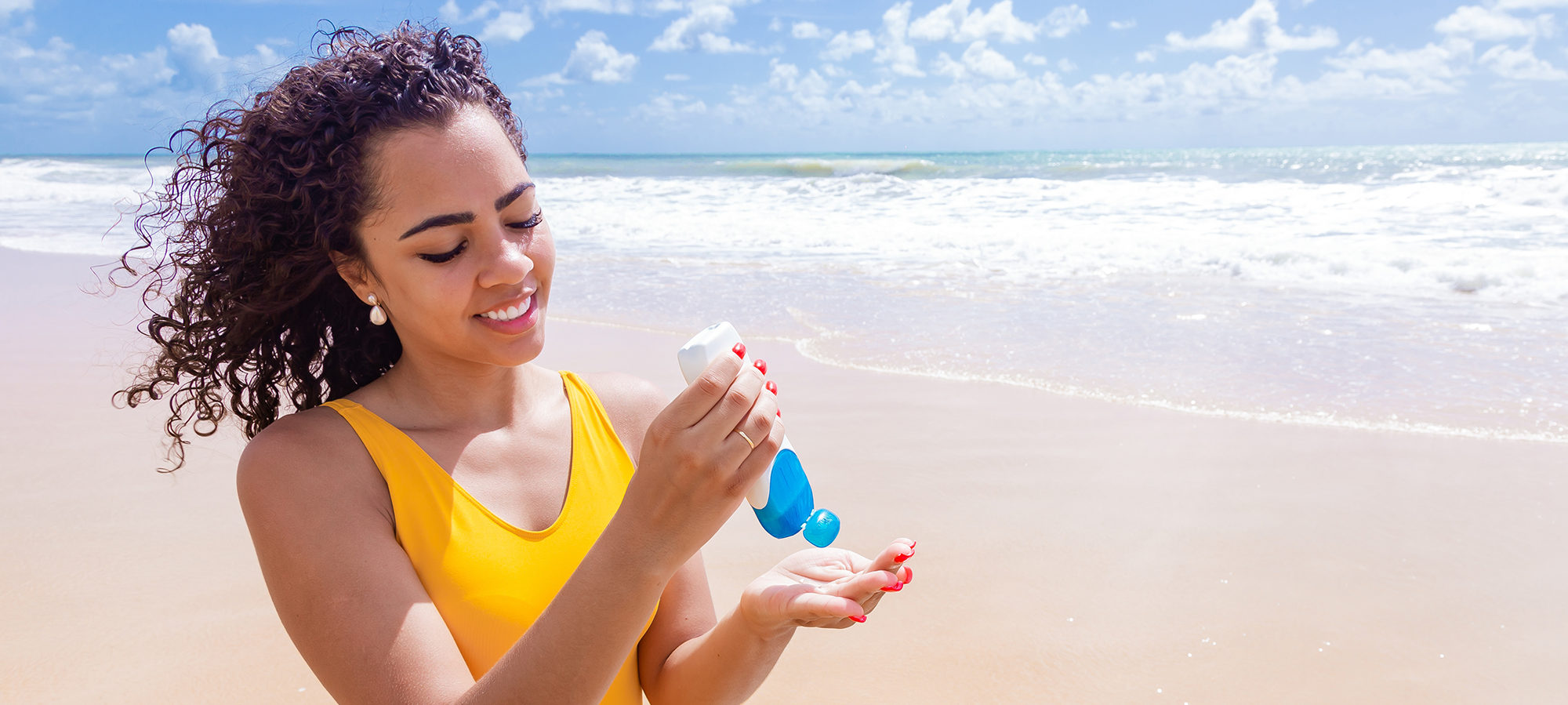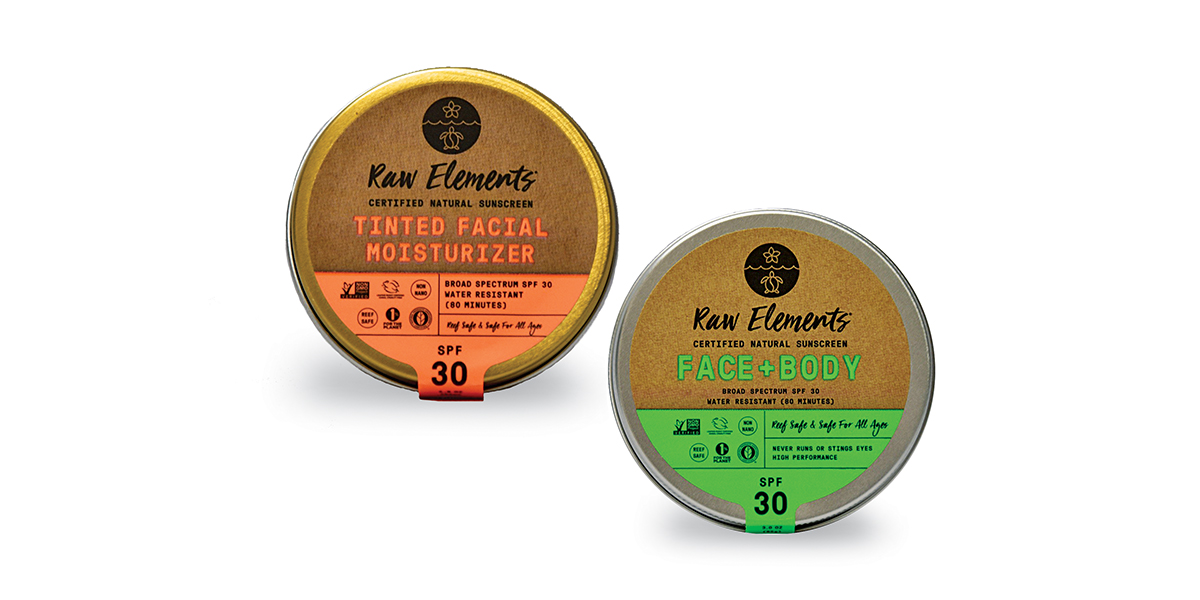How to Take Care of Your Skin During a Dive Trip
Salt and sun are great for the soul. Less so for my skin. When I did my first liveaboard in Belize, I followed the same skincare routine I do at home: put on SPF cream to start the day, wipe down my face with a Norwex-brand face cloth at night and call it good. By the end of the week, my face was a constellation of acne. With a two-week liveaboard trip aboard Red Sea RE Aggressor on my calendar, I knew I needed a better plan.
Just days before the trip, I stood under the fluorescent lights of Target, staring at rows and rows of creams. From the regiments of bottles staring back, I grabbed Target-brand and CeraVe creams because, well, my sister likes CeraVe and the Target brand is affordable. I later tossed Aquaphor into the basket to boost the hydration of the psoriasis patches on my knuckles—again, because my sister likes Aquaphor for her eczema.
This is how we make a lot of our decisions, but it’s not what you’d call a data-driven.
After I boarded the boat, I started to wonder. Was my SPF face cream reef safe? I hadn’t thought to check even as I packed my reef-safe sunscreen. And those exfoliation gloves: Was more abrasion really what my face needed after hours in the world’s second-saltiest sea?
I decided to fact check my liveaboard skincare routine with professionals when I got home. Here’s what I learned.
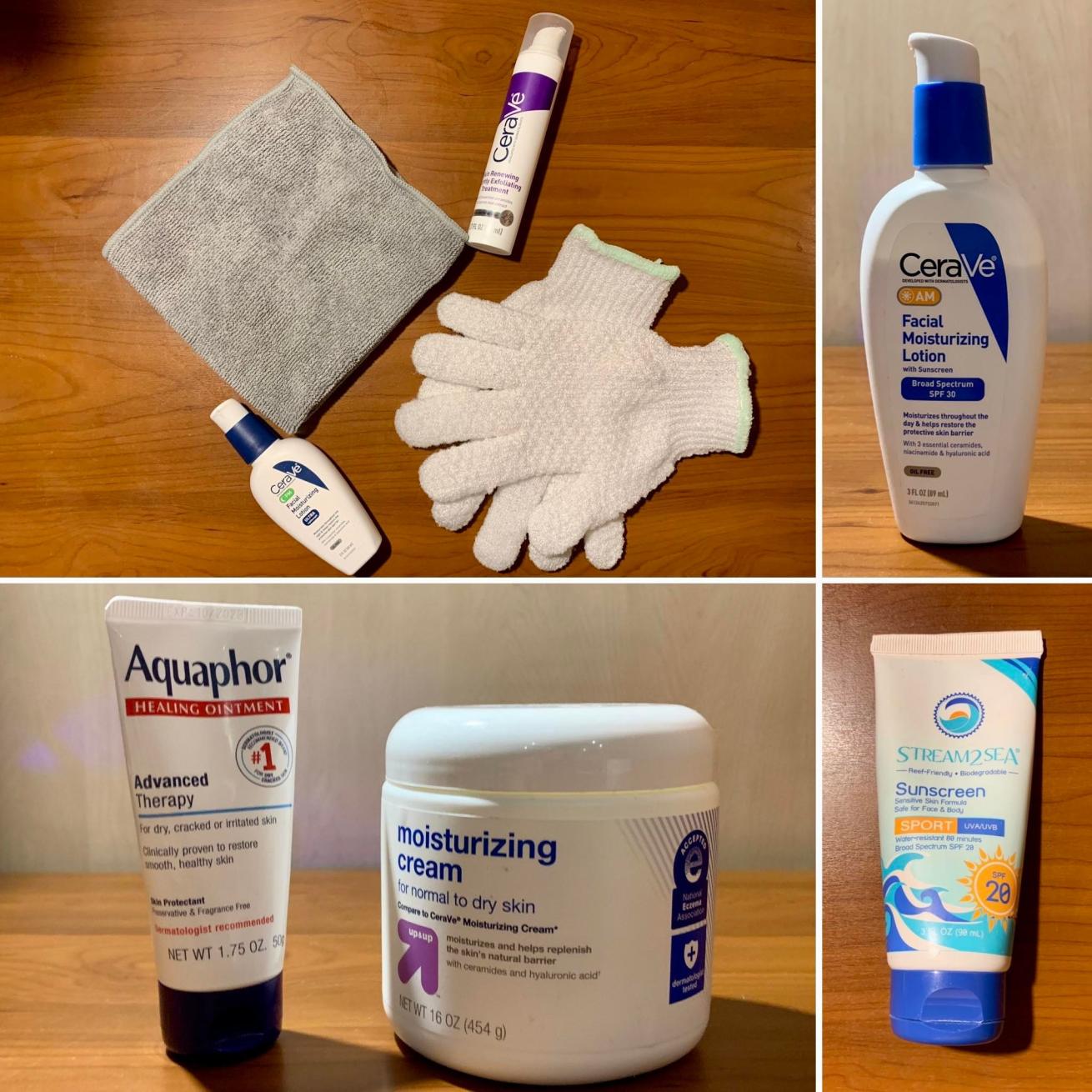
Alexandra GillespieThe skincare products used by the author. Clockwise from top left: the nighttime line up; morning face cream; sunscreen; as-needed hydration.
My Onboard Routine
Pre-Morning Dive: CeraVe AM Facial Moisturizing Lotion with Sunscreen (SPF 30) on my face; Stream2Sea Sunscreen for my hands (the rest of my skin was covered by exposure gear).
As Needed: up&up Moisturizing Cream; Aquaphor for the psoriasis patches on my knuckles.
Post-Night Dive: Using exfoliating gloves in the shower; wiping my face with a Norwex cloth; CeraVe’s Skin Renewing Nightly Exfoliating Treatment; CeraVe’s PM Facial Moisturizing Lotion
Results: On the whole, I was incredibly pleased with how my skin held up throughout this trip. I developed only one small pimple on the base of my nose where my mask kept rubbing and I neglected to treat.
What the Experts Recommend
Dive travel can be “a huge stressor to your skin, and to your microbiome—all the organisms that live on your skin—because you're almost certainly making a huge change in the amount of sun, heat” exposure says Dr. Dierdre Hooper, a member of the American Academy of Dermatology.
Protecting your skin from all this stress requires shielding, cleansing and moisturizing, according to Hooper and other skincare experts.
Shielding your skin before submerging can take the form of sunscreen, clothing, or exposure gear. While UV rays dissipate quickly underwater, they are magnified when you’re at the surface waiting to get back on the boat as they reflect off the water, says to Autumn Blum, founder of the skincare company Stream2Sea.
It’s important to screen your sunscreens and other products for ingredients that harm marine ecosystems. Chemicals in sunscreen can accumulate in coral tissues, inducing bleaching, deformation, and even fatalities in young coral, according to the National Oceanic and Atmospheric Administration. A recent study also found sunscreen chemicals are accumulating in Mediterranean sea grass. The impacts of this are unknown.
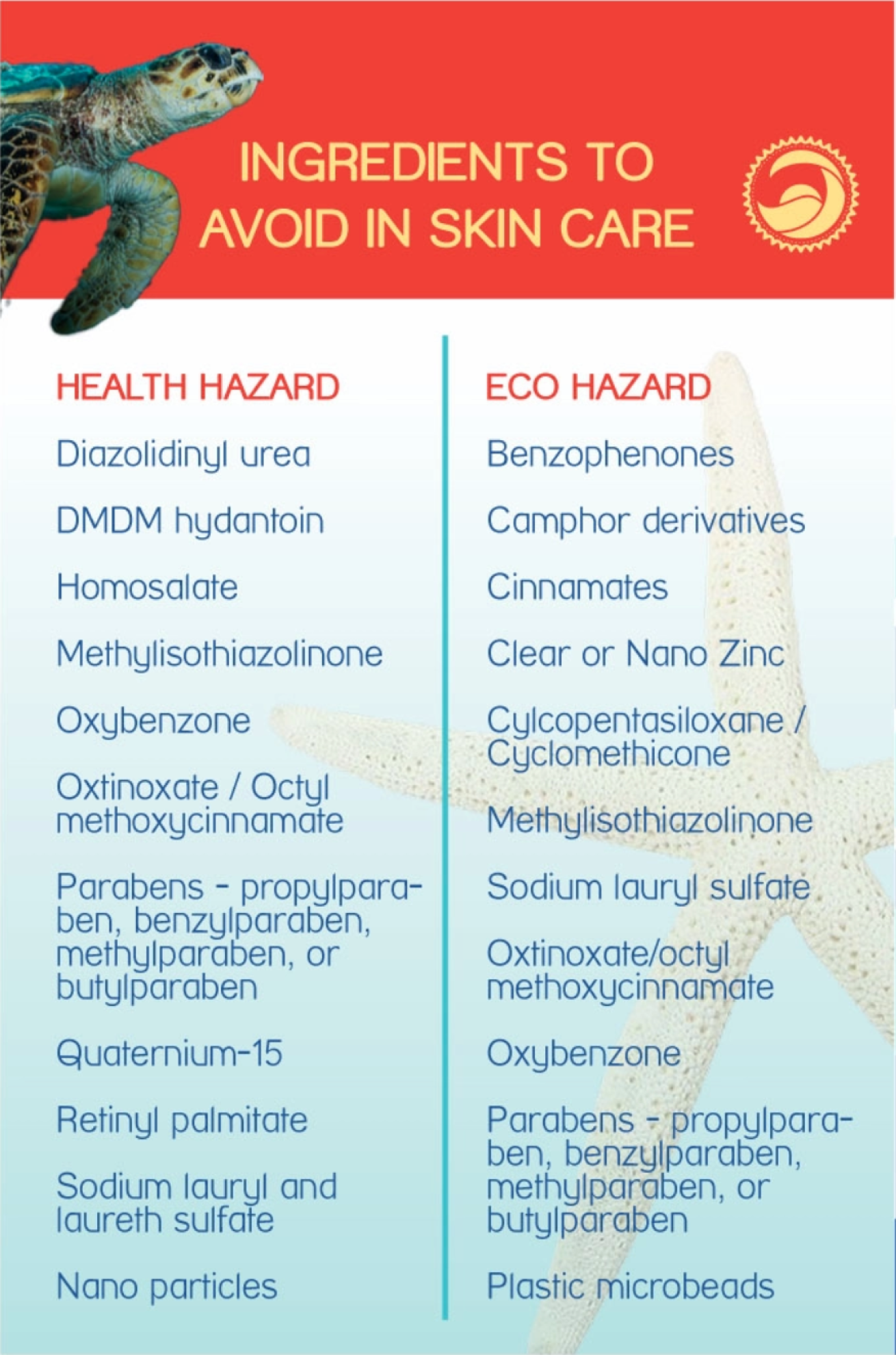
Stream2SeaStream2Sea's ingredients-to-avoid card is available for free to download.
Stream2Sea developed an ingredients-to-avoid list divers can carry with them when shopping to vet cosmetics in the store.
“[Y]ou can’t tell much about a product by the big banners on the front of the label proclaiming reef-safe or natural,” Blum says. “Neither of those terms are legally defined, so it’s important to read the small print on the back of the box… When I started Stream2Sea, one of my first formulations was a shampoo that would have passed any natural standard or human safety assessment with flying colors. When I had it tested for aquatic safety, a very small amount killed an entire tank of zebrafish.”
In addition to vetting ingredients on the bottle, divers can look for products that have received a Protect Land+Sea certification, recently created by Haereticus Environmental Labs.
After a dive, rinse your skin in fresh water to remove excess salt and cream from your pores to avoid acne. This is an important step as your pores will be open from soaking in water, but you do not have to take a full-on shower after every dive—even a quick rinse from a deck hose will help.
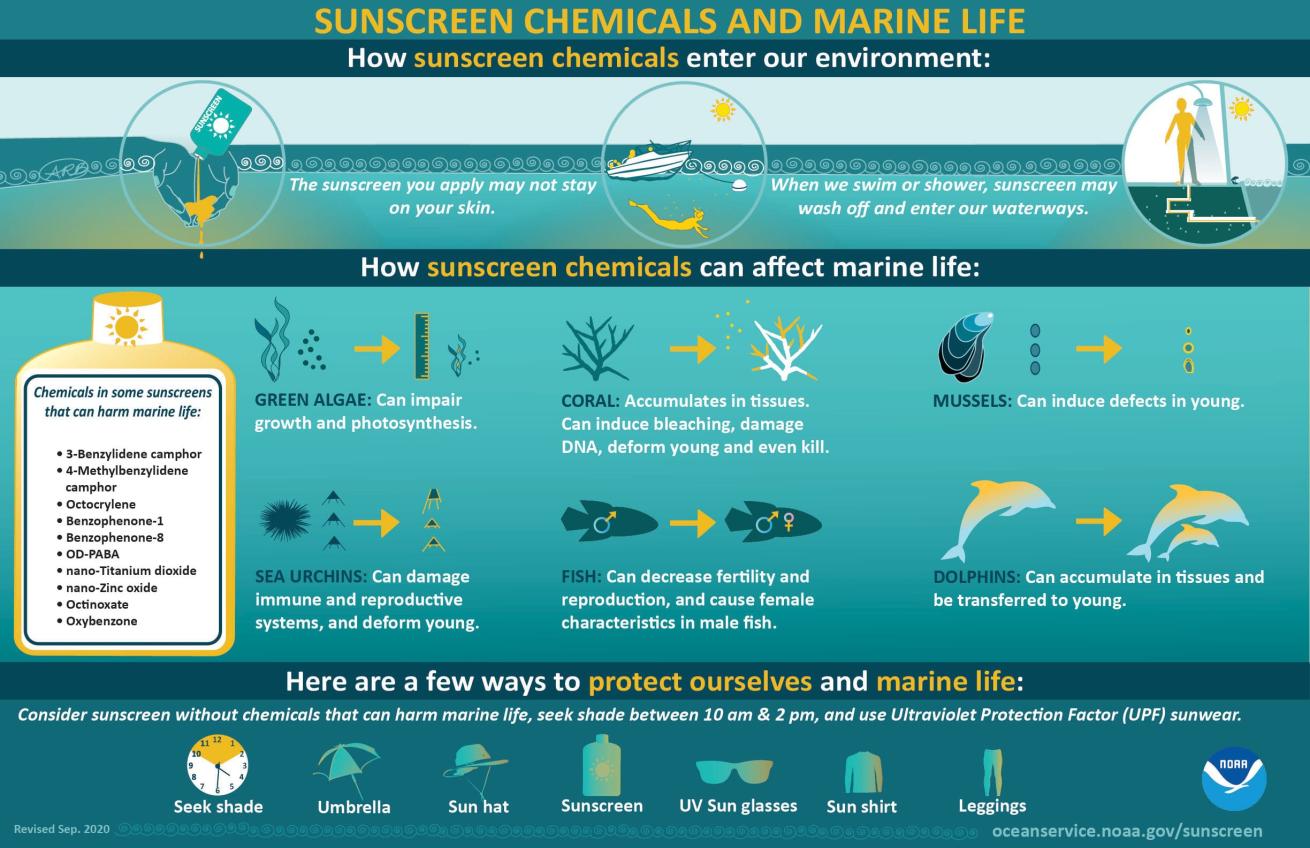
National Oceanic and Atmospheric AdministrationSunscreen chemicals can have an adverse impact on marine life.
It is not necessary to include a rough exfoliation consistently during the trip to avoid acne.
“I think that can harm your barrier and make you a little more prone to sunburn and infections,” says Hooper. A light exfoliation may help if you are getting dry and flaky, but incorporating a mild cleanser into your routine should do the trick. She recommends looking for products with benzo peroxide, hypochlorite acid, ceramides or hyaluronic acid.
After rinsing and cleansing, you will likely want to moisturize to replace lost moisturize. Blum recommends using pure vegetarian squalene—meaning the squalene is made from plants instead of extracted from shark livers—or products containing it. Consumers can look for products containing squalene certified as Shark-Free from the nonprofit Shark Allies.
Lessons Learned
I have some changes to make going forward for the health of both my skin and the ocean.
Blum reviewed the ingredients in my cosmetics, and found the CeraVe SPF lotion I used in the morning is not reef-safe since it contains octinoxate and zinc oxide.
“Besides the aquatic toxicity issues, chemical sunscreens with UV filters like oxybenzone, octocrylene and octinoxate can burn your eyes (and who wants eye burn under your mask) and will cause many people to break out,” Blum said via email. And many of my products were petroleum and silicone-based, which can make skin feel “nourished because you’ve locked in the moisture you already have, but they also block your pores and the skin’s natural respiration process. If you happen to be sunburned, petroleum-based moisturizers are also known to make burns worse, not better.” She recommends plant-based products.
The Stream2Sea ingredients-to-avoid list is now saved to my phone so I can refer to it easily wherever I’m shopping. I’ll also be pulling back on exfoliation; apparently an exfoliating cream and gloves was overdoing it. The exfoliating cream is getting cut entirely for my next trip, and the gloves will be only a backstop measure.
If all else fails, I’ll be following Hooper’s recommendation to bring an ointment containing benzoyl peroxide or salicylic acid to address any acne that does develop mid-trip.
“I would apply a topical, anti-acne treatment twice a day, and I would not pick at the acne,” Hooper says. “And I would try to keep it out of the sun so that you don't get a scar.”

